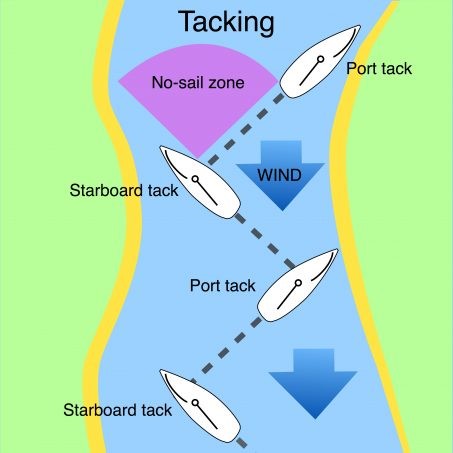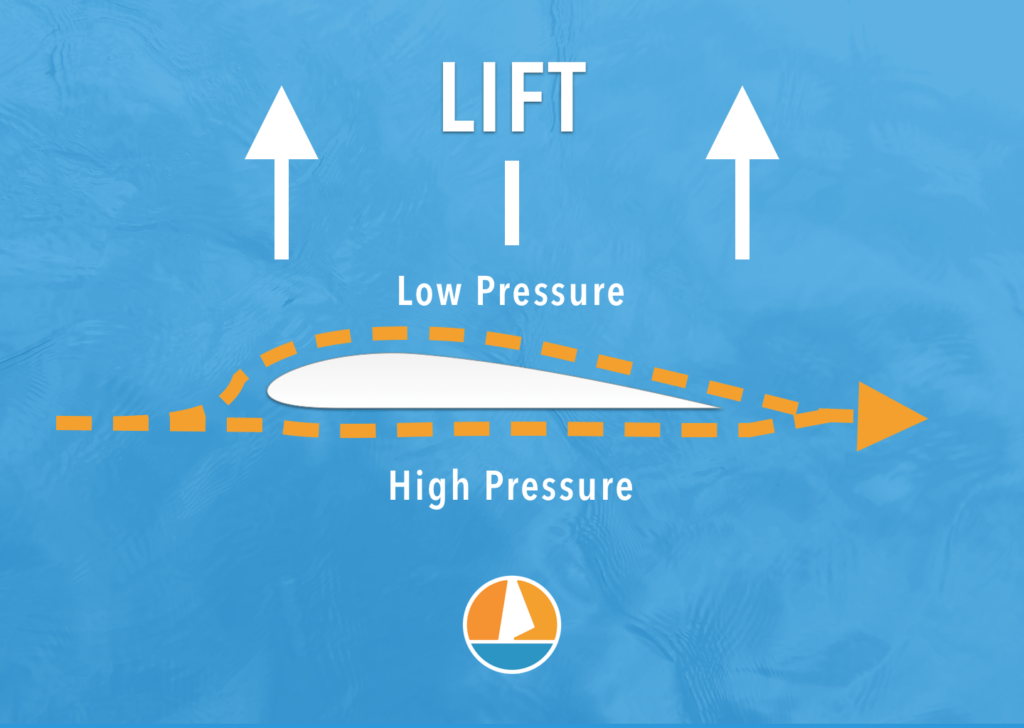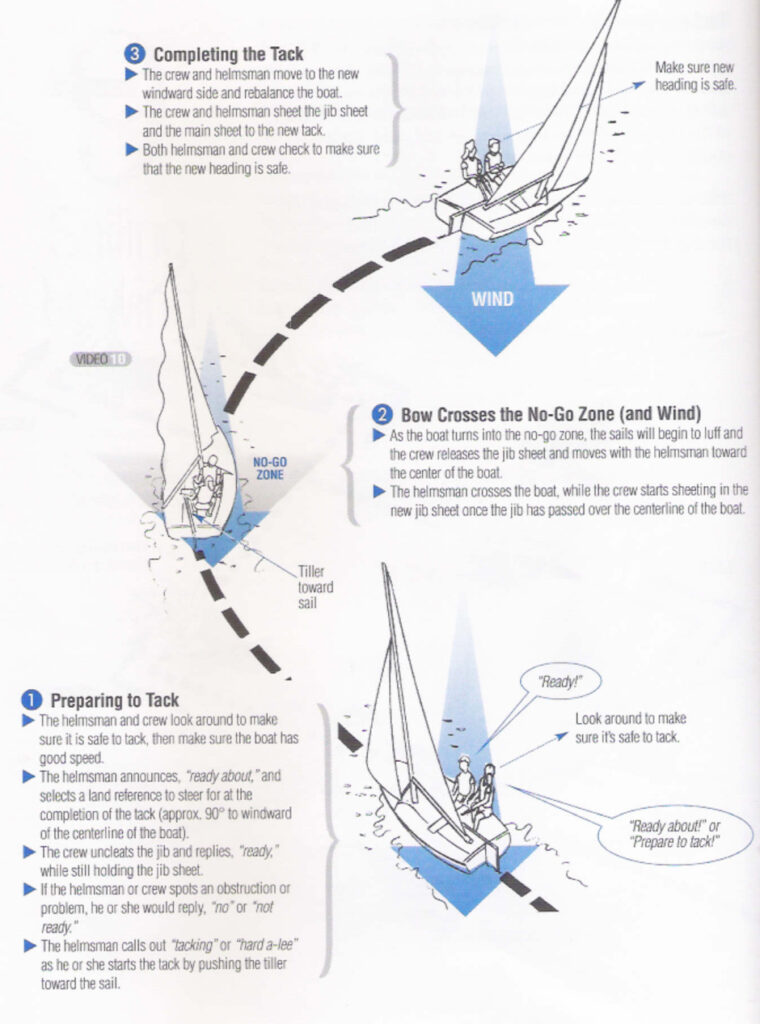It is very easy on a sailboat, windsurfer, or even a kiteboard to be taken downwind so far that you have a miserable experience trying to get back to where you started. Once you learn how to sail upwind correctly and efficiently, sailing becomes much more enjoyable, if for no other reason, you can feel confident in your ability to get home and/or back to your starting point.
The science of sailing upwind is actually amazing. People unfamiliar with sailing always seem amazed when the learn that sailboats can actually sail into the wind. This is partially true, but only to a certain degree, and this is called sailing close hauled with your sail or sails trimmed in most all the way. The process of making your way upwind by tacking back and forth is know as beating upwind.

In the image above, a sailboat is shown sailing in a zig zag pattern about 45 degrees off the wind direction and making its way upwind. Notice the sails are sheeted in tightly and the boom is almost over the centerline of the boat hull. When the boat turns from a Port Tack to a Starboard Tack, this maneuver is called TACKING. Learning to tack upwind efficiently, so you dont loose ground and go backward or just too slow upwind, you need to learn specific techniques of where to sit correctly; how to sheet your sails during and through the tack, how to move correctly from one side of the boat to the other and how to steer smoothly through the tack so you do not over/under steer and slow yourself down unecessarily. We will practice this very often because practice is the only way to learn and get use to the correct techniques to operate the boat safely and confidently… and maybe be able to win some sailboat races someday soon!

This image shows the same thing as the other one, but with the complication of a narrow channel added to the situation, which is exactly the same as our situation sailing in and out of the canal in Avon! Look familiar?

The amazing science of sailing upwind is the same for airplanes, gliders, kites, foils, or any type of water vessel/boat or airplane. When sailing UPWIND the sail is actually being SUCKED into the direction of the wind… not pushed! You can illustrate this in your kitchen by dangling a big tablespoon from your fingertips and running water down it and you’ll see the spoon lifting sideways from the water flowing over it. But this is why it is so important to understand your sail shape and how to adjust it for the wind conditions and speed. If your mainsheet is too loose, for example, your sail will flutter or luff in the wind and have no shape and simply not work right. If you over tighten your mainsheet, you will stall your sail…… which isnt so bad on a sailboat, but if you did the same mistake on an airplane, you would fall out of the sky.


For the Scientific Minded, you should be incredibly challenged to make the sail work perfectly. For those less technical, remember one thing! While steering your boat upwind with your sheets close hauled, you can “Head Up” until your sails just start to begin luffing, to test that your steering as “Close” to the wind as possible and not in the NO GO ZONE, and then bear off slightly…. SLIGHTLY… until your sails just stop luffing, then you know you are on a good course. Then keep that course, but be mindful that the wind does shift constantly, normally in small degrees, but that you may need to be really vigilant and keep testing that you are on your best upwind heading so you get to the upwind mark or finish line before the others do!


Please study these pictures and try your best to understand them. When you come back to Sailing Class next week, we will sit down and try to clarify anything you may not understand. The better you understand this upwind sailing challenge, the faster it will start to become easy for you to sail fast UPWIND on your boat!
Here are some additional videos on sailing your Opti Upwind

This one is really really good on form, where to sit, how to trim, how to hold the lines. https://youtu.be/LHhXD5jKL3w
…if you are over 70lbs it is very important where you sit